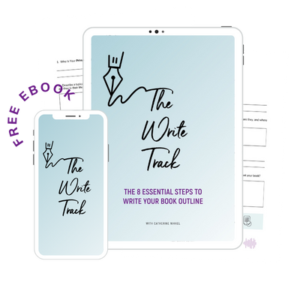Creating compelling and believable dialogue for short stories is one of the most crucial skills in a fiction writer’s arsenal. Yet, it’s often one of the most challenging to master. The key to great dialogue lies in the details. It’s not just about what your characters say, but how they say it and what it reveals about their character and the novel’s overall plot. In this guide, we will dive into the essential dialogue tips to help you write dialogue that resonates with readers and pushes your story forward.
Understanding Dialogue Basics
Dialogue Tags and Their Importance
One of the fundamental aspects of writing dialogue is using dialogue tags in separate sentences. These tags, often in the form of ‘said’ or ‘asked,’ function as signposts to complete sentences, guiding your reader through the conversation by identifying who is speaking. While these tags might seem mundane, they are vital for clarity.
As a general rule, keep your dialogue tags simple. The dialogue should carry the emotional weight of the entire conversation, not the tag.
Dialogue Example: “I can’t believe you did that,” she said.
In the dialogue example above, the tag ‘said’ simply informs the reader of the speaker without detracting from the dialogue’s content.
Realistic Dialogue: Less is More
Another key to writing better dialogue is making it realistic. However, remember that realistic dialogue in fiction writing doesn’t mean copying real-life speech verbatim. The conversation often includes filler words, irrelevant tangents, and small talk. While this might be part of real-life speech, all the fluff must be trimmed away in fiction writing.
Dialogue in your story should be purposeful and push the plot forward. Each line of dialogue should reveal something about the character or the situation at hand.
Dialogue Example: “I’ve always loved the rain,” he admitted, looking out the window.
This line of dialogue gives the reader insight into the character’s personality and sets the scene’s mood without unnecessary words.
Quotation Marks: A Necessary Detail
An essential aspect of writing dialogue is correct punctuation. Whether you use single quotation marks or double quotation marks often depends on your geographical location and the style guide you’re adhering to. In American English, double quotation marks are the standard for denoting dialogue. The British English convention, on the other hand, uses single quotation marks to write dialogue.
Dialogue Example (American English): “Is it raining again?” she asked.
Dialogue Example (British English): ‘Is it raining again?’ she asked.
Regardless of which you choose, consistency is crucial.
Stay tuned for the next section, where we’ll delve deeper into crafting unique voices for your characters.
Crafting Unique Character Voices
One of the most powerful aspects of dialogue is its ability to give characters distinct identities. A character’s speech can tell the reader much about their personality, background, and emotional state. Here are some dialogue tips to help you create distinct voices for each character.
Understanding Speech Patterns
Every character in your story should have a unique way of speaking, referred to as a speech pattern. Speech patterns can be influenced by a character’s age, education, culture, region, and even personality traits. One character might use complex sentences and an expansive vocabulary. In contrast, another might use shorter, more straightforward sentences with colloquial language.
Dialogue Example:
Character A: “Could you possibly consider the ramifications of your actions?”
Character B: “Did you think about what could happen?”
The same idea is expressed in both lines of dialogue. Still, the differences in language choice, sentence structure, and formality level differentiate the two characters.
Including Body Language and Action Beats
The words your characters speak are only part of the dialogue. Non-verbal communication is integral to a natural conversation and should be reflected in dialogue scenes. This includes body language, pauses, and other non-verbal cues or ‘dialogue beats.’
Dialogue Example:
“I don’t know,” she shrugged. “Does it even matter?”
In this example, the shrug adds depth to the spoken words, indicating the character’s uncertainty or indifference.
Maintaining Flow and Clarity in Dialogue
Crafting dialogue that flows naturally while maintaining clarity can be challenging for fiction writers. Here are some tips to help you achieve this in your writing.
Keeping Dialogue Tags Clear
As we’ve touched on before, dialogue tags are crucial for clarity. However, when a conversation involves more than two characters, it becomes even more important to have dialogue rules to ensure readers can easily follow who is speaking.
You should include a dialogue tag every time the speaker changes. However, suppose there are only two characters in the same conversation, and it’s clear who’s speaking. In that case, you can leave the tag out for a few more lines of dialogue.
Breaking Up Long Speeches
In a real conversation, it’s rare for one person to talk for a long time without any interruption or reaction from the other person speaking. To maintain a realistic interaction, break up long speeches with reactions from the other character or from other characters themselves, action beats, or changes in the environment.
Dialogue Example:
“But I don’t understand,” he said, running his fingers through his hair. “Why would she do that?”
This break adds rhythm and realism to the action beat between the dialogue and the action beat and provides an opportunity for character development.
Editing and Refining Your Dialogue
After you’ve laid the groundwork and written the initial lines of write great dialogue here, the next crucial step is to refine your work. This is where the real magic happens, and good dialogue becomes excellent.
Dialogue Tags Revisited: Less is More
While dialogue tags are necessary for clarity, too many can make a conversation feel stilted and unnatural. During the editing process, review your dialogue scenes and consider if there are any places where the dialogue tag could be removed without causing confusion.
Dialogue Example:
Original: “I’m not sure,” John said. “Maybe we should ask for directions,” he suggested.
Revised: “I’m not sure. Maybe we should ask for directions.”
The revised version removes most readers from the unnecessary dialogue tag, allowing the conversation to flow more naturally.
Adding Depth with Dialogue Beats
Revisit your dialogue scenes and consider if you can replace some dialogue tags with dialogue beats—those small pieces of action that break up the dialogue. This adds depth to your characters and can make the dialogue more dynamic and engaging.
Dialogue Example:
Original: “I don’t know,” she said. “I just don’t know.”
Revised: She shook her head, looking down at her hands. “I don’t know. I just don’t know.”
In the revised example, the dialogue beat helps to show the character’s emotional state, making the dialogue more engaging and the character more relatable.
Ensuring Consistent Character Voices
During editing, ensure that each character maintains a consistent voice throughout your story. Consider how characters talk vocabulary, syntax, and speech patterns. If a character starts the story with a particular speech pattern, make sure it’s maintained unless there’s a plot reason for it to change.
These tips should help you write effective dialogue that entertains your readers, moves your plot forward, and provides insight into your characters. Writing great dialogue may be challenging, but with practice, you’ll see your characters come to life in conversation. So keep writing, revising, and keeping your characters talking!
The Dos and Don’ts of Dialogue
Let’s delve into dialogue examples and some practical dialogue examples and discuss the general dos and don’ts to remember as you write and revise your dialogue.
Do: Use Dialogue to Show, Not Tell
Good dialogue shows character traits and emotions rather than telling them directly. Instead of using dialogue tags like “he said angrily,” show the anger through what the character says or how they say it.
Dialogue Example:
Do: He slammed his hand on the table. “Enough!”
Don’t: “Enough,” he said angrily.
Don’t: Overuse Adverbs in Dialogue Tags
While adverbs can occasionally enhance a scene description with dialogue tags, they are often unnecessary. They can be seen as a form of telling rather than showing.
Dialogue Example:
Do: “No,” she said, pushing away from the table.
Don’t: “No,” she said defiantly.
Do: Use Contractions in Dialogue
Contractions (I’m, don’t, can’t, etc.) make dialogue more natural. Without them, dialogue can feel stiff and formal unless this suits the character or the situation.
Dialogue Example:
Do: “I can’t believe you did that!”
Don’t: “I cannot believe you did that!”
Don’t: Include Too Much Small Talk
While some small talk can add realism to your dialogue, too much can slow down your story and bore readers. Keep your dialogue focused on moving the story forward or revealing the character.
Dialogue Example:
Do: “Nice weather we’re having,” he said, avoiding eye contact.
Don’t: “Nice weather we’re having. It was sunny yesterday too. I think it’s supposed to rain tomorrow, though…”
Do: Use Realistic Interruptions and Overlaps
In actual conversation, people often interrupt or talk over each other. Including this in your dialogue can add realism and pace.
Dialogue Example:
Do: “But I didn’t even—”
“—No excuses. You’re grounded.”
Don’t: “But I didn’t even get a chance to explain.”
“No excuses. You’re grounded.”
Remember, these are guidelines, not hard-and-fast rules. The most important thing is writing dialogue that feels true to your characters and story. With practice and persistence, you’ll develop an ear for dialogue that sounds authentic to actual writers, brings your characters to life, and engages your readers. Happy writing!
Writing Dialogue in Different Genres
Understanding that different genres have different expectations for dialogue can significantly affect your writing. Whether you’re writing a hard-boiled detective story or a high fantasy epic, the way your characters speak should reflect the genre’s conventions and the story’s unique world.
Writing Dialogue in Mystery and Thrillers
In mystery and thriller novels, dialogue often serves as a tool for revealing clues and building suspense. The dialogue must be tight, and every line should advance the plot or develop the characters. Unnecessary chatter can slow the pacing and distract from the tension.
Dialogue Example:
“Do you remember what time you left the party last night?”
“I think it was around midnight. Why?”
“No reason. Just trying to piece things together.”
Notice how the dialogue hints at some underlying tension and intrigue between the three characters, sparking curiosity in the reader.
Writing Dialogue in Fantasy and Science Fiction
In fantasy and science fiction, dialogue can help to build the world and make it feel real. However, avoiding overly formal or archaic language is essential unless appropriate for the particular character or culture. Keeping dialogue accessible will keep the reader engaged with the characters and story.
Dialogue Example:
“I swear by the Seven Stars, I’ll have the truth from you, Dalor.”
“You’re welcome to try, Vareth.”
The dialogue here introduces elements of the fantasy world (“the Seven Stars”) while maintaining accessibility and revealing character dynamics.
Writing Dialogue in Romance
In romance novels, the dialogue is crucial for developing the relationship between characters. It’s a tool for building tension, revealing emotional depth, and ultimately creating a believable love story. Dialogue in romance can range from sweet and flirtatious to intense and passionate.
Dialogue Example:
“Is that so?” he murmured, leaning closer. “And what if I don’t want to be just friends?”
Her heart skipped a beat. “Then I guess we’ll have to figure something else out.”
This dialogue example uses tension and emotional stakes to create a romantic moment between characters.
Understanding how dialogue functions in your chosen genre can add depth and authenticity to your writing. Always remember, regardless of genre, the best dialogue remains true to your characters and serves your story.
Creating Distinct Character Voices
A crucial part of writing dialogue is creating unique voices for your various characters voices. When each character has their own voice and distinct speech pattern, readers can often tell who is speaking without needing dialogue tags. Distinct character voices also deepen characterization and make your story more immersive.
Consider Character Background
A character’s background will influence their speech. A scholar character might use larger words and more complex sentences. In contrast, a child character will have simpler, less polished speech.
Dialogue Example:
“Do you comprehend the magnitude of our predicament?” asked the scholar.
The child scrunched up her face. “You mean we’re in big trouble?”
Use Dialect and Slang Carefully
While dialect and slang can add authenticity to character voices, overdoing them can make dialogue hard to read. Try hinting at dialect rather than writing it phonetically, and remember that slang can quickly date your story.
Dialogue Example:
“I ain’t never seen nothin’ like it,” he said, his accent thick.
Differentiate Speech Patterns
Vary sentence lengths and complexity to differentiate between characters. One character might speak in short, blunt sentences, while another prefers long, flowing monologues.
Dialogue Example:
“We need to leave,” said one character.
“But consider the implications,” said another. “If we depart now, we leave behind any chance of reclaiming what’s rightfully ours. Can we truly justify such a decision?”
Creating unique voices for your characters requires a deep understanding of each character’s background, personality, and motivations. Listen to how people speak in real life, paying attention to how they vary based on factors like age, profession, and mood. Use these observations to bring your voice and the characters’ voices to life.
Dialogue Punctuation and Formatting
Lastly, let’s touch on the technical aspect of writing dialogue. Correct punctuation and formatting are crucial for clarity and reading comprehension.
Quotation Marks
In American English, dialogue is enclosed in double quotation marks. In British English, either use single quotation marks or double quotation marks can be used.
Dialogue Example:
American English: “I’m going to the store,” she said.
British English: ‘I’m going to the store,’ she said.
Dialogue Tags
Dialogue tags (like ‘he said’) generally come after a line of dialogue. Still, they can also be placed before or in the middle of the line.
Dialogue Example:
“Do you think we can win?” he asked.
He asked, “Do you think we can win?”
“Do you,” he asked, “think we can win?”
New Speaker, New Line
Start a new line each time a different character starts speaking. This makes it clear who is speaking and keeps the dialogue readable.
Dialogue Example:
“Do you think we can win?” he asked.
“I don’t know,” she replied. “But we have to try.”
By mastering these rules, you’ll ensure your dialogue is clear, professional, and easy to read. You’ll avoid confusing your readers, allowing them to fully immerse themselves in the story and characters.
Throughout this comprehensive guide, we have examined dialogue from numerous angles, from creating distinct character voices to appropriately punctuating dialogue. We’ve shared examples, advice, and tips, to help you write realistic dialogue, engage, and be purposeful. You’ll develop your unique style and voice with practice and persistence, crafting an effective dialogue that brings your stories to life. Remember, the best dialogue sounds authentic and well-written dialogue reveals character and advances the plot.
Wrapping up
Writing dialogue is both an art and a craft. It requires a keen ear for speech patterns, a deep understanding of characters, and the technical know-how to format and punctuate dialogue correctly. But with practice and dedication, you can write compelling dialogue that breathes life into your characters and captivates your readers. Remember, the heart of good dialogue is authenticity. Let your characters speak in a way that’s true to who they are, and your readers will listen.
After this long journey of learning how to craft compelling dialogues, it’s time to start putting your knowledge into practice. Keep honing your craft, and never stop exploring. And remember, every great writer was once where you are now. Keep writing!
Frequently Asked Questions
Q: Can a story work without any dialogue?
Absolutely, a story can work without any dialogue. Dialogue is a powerful tool for characterization and plot progression, but it’s the only exception, not the only one. Detailed descriptions, internal thoughts, and actions can also serve these functions. However, in genres like realistic fiction, the absence of dialogue might feel unnatural unless handled with a particular narrative or stylistic purpose.
Q: Is it okay to use dialects in dialogue?
Yes, using dialects in dialogue is okay, but it’s crucial to handle them respectfully and accurately. Poorly represented dialects can be offensive or distracting to readers. Moreover, a too-heavy emphasis on phonetic spelling can make dialogue difficult to read. It’s often better to suggest a character’s dialect through word choice and sentence structure rather than trying to replicate it exactly.
Q: How much dialogue is too much?
There’s no fixed amount of dialogue a story should have. It largely depends on the story’s needs and the writer’s style. Too much dialogue with little action or description might leave readers feeling detached from the story’s world. Conversely, a lack of dialogue might make characters feel distant or unreal. Striking the right balance is key.
Use your Voice, Make an Impact.
Catherine x

Email: catherine@catherinenikkel.com
Resources
What type of Content Creator are you? Take the Quiz! – 4 different types of creators, which one are you?
Need help telling your story in your own voice? Let’s make it happen. Schedule a consultation with me here






